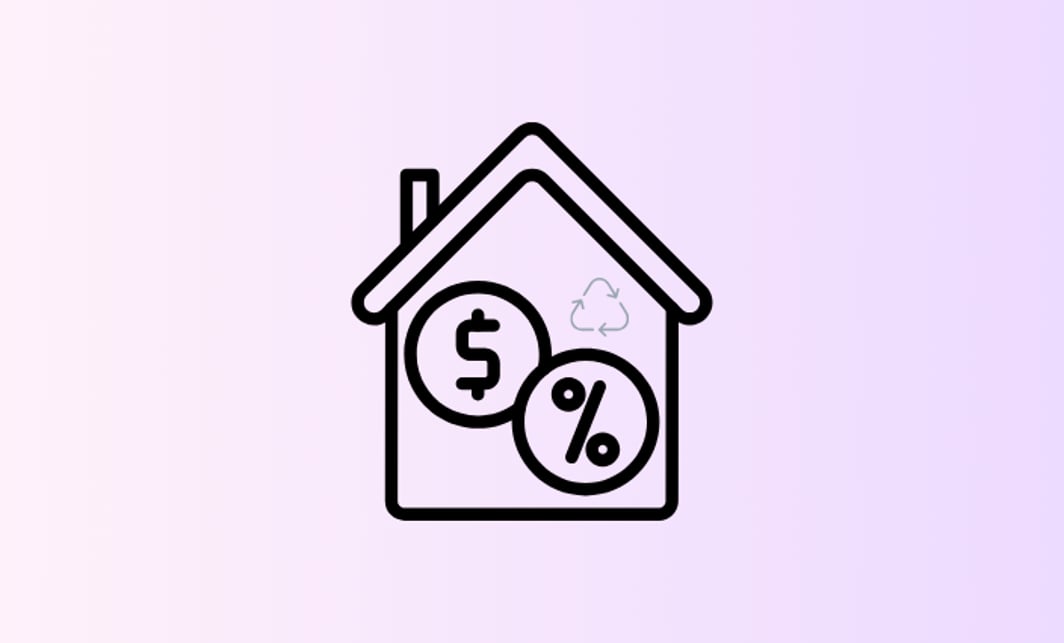Your home's value dropped. Can you still refinance in Australia?
Yes, you can absolutely refinance if your property value has dropped, but it’s a fair bit trickier than when the market is booming. The short answer is that your success hinges almost entirely on one number: your Loan-to-Value Ratio (LVR). A fall in your property's value automatically pushes LVR up, and if it crosses certain thresholds, typically 80%, lenders get nervous. Your ability to secure a better deal will depend on how much equity you have left, the type and location of your property, and your overall financial health. It’s not a flat-out "no," but it is a definite "show me the numbers."
The whole refinancing game is built on a lender’s confidence in your ability to repay the loan and their ability to recover their money if you can’t. The property itself is their security blanket. When that blanket gets smaller, they start to feel a chill. This is why a simple valuation change can throw a spanner in the works for what seems like a straightforward request for a better interest rate.
The LVR Hurdle: The number that rules them all
Let's get down to brass tacks. Your LVR is the percentage of your property’s value that is mortgaged. The formula is simple: (Your Loan Amount / Your Property’s Current Value) x 100.
Imagine you bought a house for $1,000,000 with an $800,000 loan. Your starting LVR was a neat 80%. Now, let's say the market has cooled and a bank valuation comes in at $900,000. You've paid off a bit, so your loan is now $780,000.
Your new LVR is ($780,000 / $900,000) x 100 = 86.7%.
Suddenly, you’ve crossed the magic 80% line. This is a big deal. For lenders, an LVR over 80% is a flashing warning light. It means you have less than a 20% equity buffer, which significantly increases their risk. This is the point where they insist on Lenders Mortgage Insurance (LMI), a costly one-off premium that protects the lender, not you, if you default. If you’re trying to refinance, a new lender will require a new LMI policy, adding thousands to your costs and making the whole exercise potentially pointless.
Most lenders also have hard ceilings. While some might stretch to a 95% LVR for new purchases (with a hefty LMI premium), for refinancing, the limits are often tighter. Many will draw the line at 90%, and some might not go beyond 85%. If your property value drop pushes your LVR over this limit, the conversation with a new lender is likely to be a very short one.
It's not just your house, It's where it is: location, location, restriction
A 10% drop in property value is not treated equally across the board. Lenders are obsessed with risk, and they slice and dice the country into different risk profiles, often right down to the postcode. A lender might be perfectly happy to refinance a house with an 85% LVR in a blue-chip Melbourne suburb like Balwyn, but baulk at the same LVR for a high-rise apartment in Southbank, where there's a perceived oversupply.
This is where property type and location collide to create a risk matrix for lenders.
- Houses in capital cities: Generally seen as the safest bet. They hold their value better in downturns and have broad appeal. Even with a value drop, refinancing is often still on the table, provided the LVR remains within acceptable limits (ideally below 90%).
- Apartments in capital cities: This is where it gets complicated. Lenders have become much more cautious, particularly with high-density towers. They might impose lower maximum LVRs, say 80% or even 75%, for apartments compared to 90% for houses in the same area. They may also have restrictions on apartments under a certain size (e.g., 50 square metres) or those with unique features like serviced or student accommodation.
- Regional properties: The lender’s view on regional Australia is a mixed bag. A property in a major regional hub with a diverse economy like Geelong or Newcastle might be treated similarly to a capital city property. However, a home in a single-industry town, like a mining town in the Pilbara, is a different kettle of fish. If the town's main industry hits a rough patch and property values slide, lenders might red-flag that postcode entirely, making refinancing next to impossible, regardless of your LVR. They've been burned before and have long memories.
This postcode-based risk assessment is often informal and changes constantly based on the lender’s internal data and market outlook. You won’t find a public "blacklist," but a good mortgage broker will know which lenders are currently skittish about certain areas.
The refinancing scenarios: A side-by-side smackdown
Theory is one thing; let's see how this plays out for four different Aussie homeowners.
This comparison shows it's not just the percentage drop that matters, but the starting point and the context. A small drop can tip a high-LVR loan into the danger zone, while a larger drop on a low-LVR loan might still leave you with options.
The lender's playbook and the rules of the game
When you apply to refinance, you’re not just dealing with a credit analyst; you’re up against a wall of policy and regulation. The major banks like CBA, Westpac, NAB, and ANZ, tend to be the most conservative. They have vast amounts of data and sophisticated risk models. If their models flag your postcode or property type as high-risk, the answer is often a computer-says-no decision.
Non-bank lenders and credit unions can sometimes be more flexible. They might have a greater appetite for risk or use different assessment criteria, potentially allowing for a higher LVR. However, this flexibility can come at a price, often in the form of a slightly higher interest rate or different fees. They aren't a magic bullet, but they are an important alternative to explore.
Underpinning every lending decision in Australia is the National Consumer Credit Protection (NCCP) Act. These are the "responsible lending" laws that you hear about. They legally oblige a lender to do two things: make reasonable inquiries about your financial situation, and ensure the credit contract is 'not unsuitable' for you.
How does this apply when your property value has dropped? A lender can argue that refinancing you into a new loan, even at a lower rate, is unsuitable if your equity position is weak. They might reason that you have no financial buffer if you needed to sell, or that the added cost of LMI makes you worse off. This legislation is the primary reason a lender can, and will, deny an application if they aren't comfortable with the risk—it’s not just their policy, it’s their legal obligation.
So, what are your options? A practical toolkit
If you’ve run the numbers and realised your new LVR is making refinancing a tough gig, don’t despair. You're not Robinson Crusoe here. You still have several strategic moves you can make.
1. Wait it out and pay it down. Sometimes the best move is no move at all. If your current interest rate isn't crippling, focus on making extra repayments to chip away at the loan principal. Every extra dollar you pay off directly improves your LVR. A year of aggressive repayments, combined with potential market stabilisation, could put you back in a strong refinancing position.
2. Negotiate with your current lender. This is your most powerful and overlooked option. Your current bank already holds the risk. They know that if you leave, they lose a customer, but if you stay, they continue to make a profit. Call their retention team (don't just talk to the local branch) and tell them you are considering refinancing. State the best rate you've seen advertised elsewhere and ask them to match it or get close. They won't let you do a full refinance to access more equity if your LVR is too high, but they will very often offer a significant rate reduction, a "repricing" to keep you. It's the easiest win available.
3. Inject cash if you can. If you have savings, an inheritance, or a bonus sitting in an offset account, consider using it to pay down the loan balance. For example, if Ben from our scenario could find $25,000 to pay down his loan, his LVR would drop from 92.2% to 87.3%. This could be enough to get him under a 90% LVR policy ceiling and open up new refinancing options (though he'd still face LMI).
4. Talk to a good mortgage broker. This isn't a sales pitch; it's a strategic necessity in a tricky market. A good broker is worth their weight in gold. They deal with dozens of lenders daily and know constantly shifting policies. They'll know which lender just relaxed their rules on apartments, which one has a better appetite for regional areas, and which one uses a more generous property valuer. They can save you from a series of fruitless applications that only serve to add inquiries to your credit file.
A drop in your property's value feels like a step backwards, and it can certainly complicate your financial plans. But it doesn't have to be a dead end for getting a better deal on your mortgage. It simply changes the rules of the game. The focus shifts from chasing cashback offers to a more fundamental assessment of your equity, your location, and your lender's appetite for risk. By understanding your LVR, exploring all your options, and getting the right advice, you can still navigate a cooling market and put yourself in a stronger financial position.




